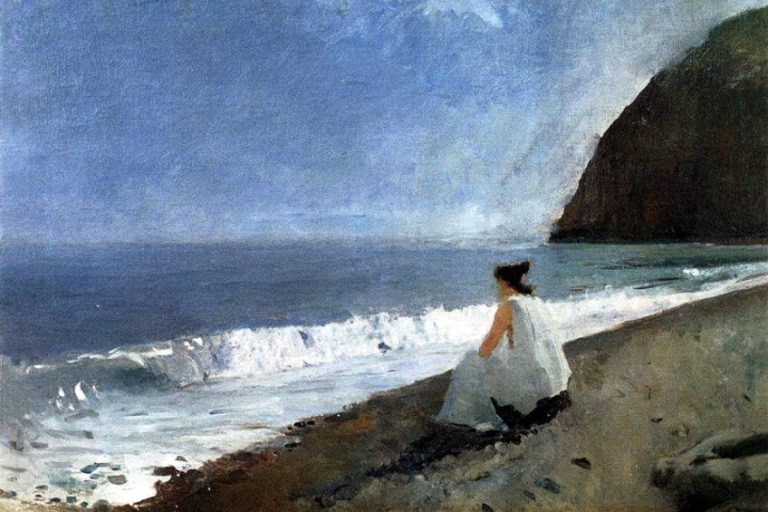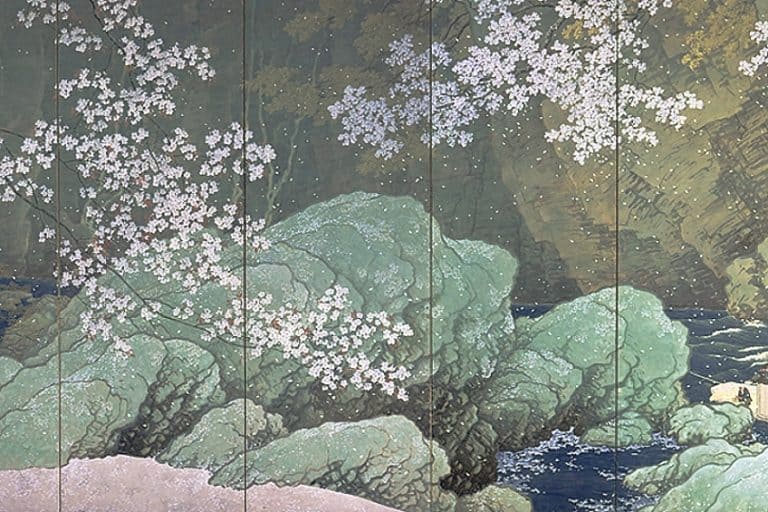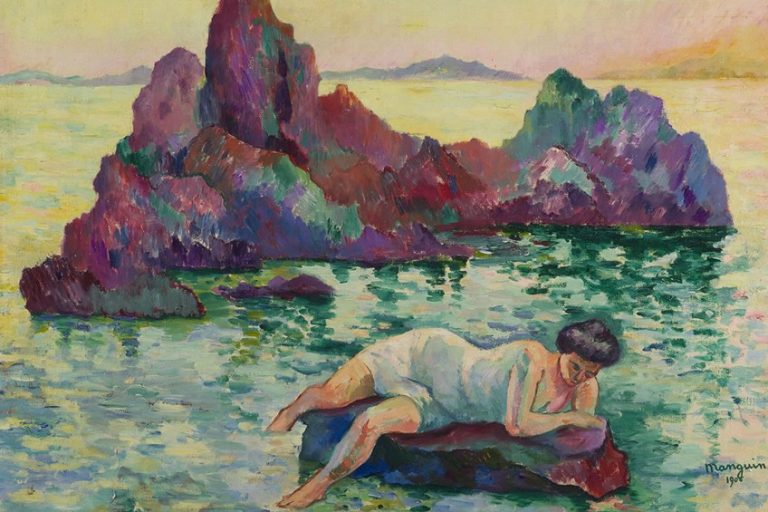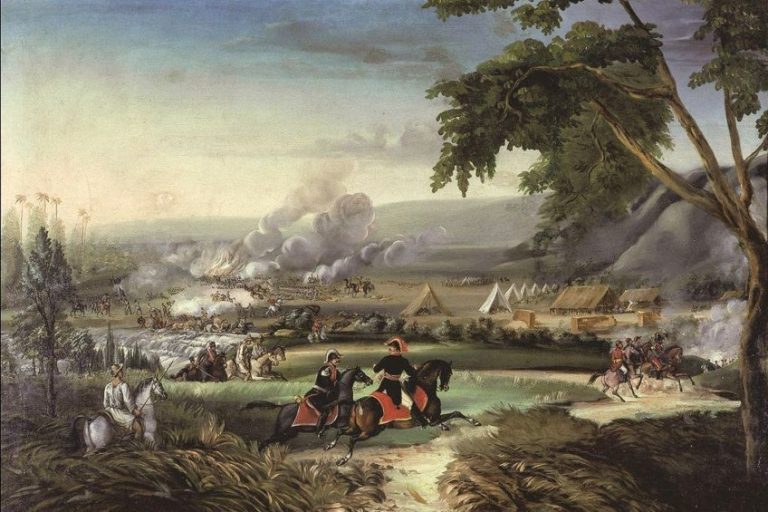Female Rage in Art – From Anguish to Empowerment
In the vast canvas of art history, the expression of female rage stands as a powerful and often understated theme. From ancient mythologies to contemporary works, artists have explored the complexities of anger, frustration, and defiance in the female experience. This exploration not only challenges societal norms but also serves as a poignant reflection of women’s struggles, triumphs, and resilience. In this article, we delve into the diverse manifestations of female rage in art, uncovering the layers of emotion, symbolism, and cultural context that contribute to its enduring significance.
Key Takeaways
- Artistic expressions of female rage have been utilized to navigate and confront issues of oppression and inequality.
- The evolution of female rage in art mirrors the changing dialogue around gender, power, and societal norms.
- Female rage in art has had a significant impact on both the arts and broader cultural discussions, raising awareness and prompting introspection.
Female Rage in Art
Throughout history, art has been a platform for expression and social commentary, reflecting the deepest emotions and struggles of humanity. Female rage in art represents a powerful and often misunderstood narrative, where the expression of anger and dissatisfaction serves as both a personal catharsis and a political statement. These emotive pieces often emerge from experiences of oppression, violence, and inequality, channeling the intensity of these sentiments into impactful works that challenge the status quo and provoke thought and dialogue.

Spanning from historical paintings to contemporary performances, the articulation of female rage in art has evolved, yet the potency of its message remains steadfast. Artists have employed a diverse array of mediums to convey this theme, with each creator adding a distinct voice to the collective conversations around gender and power. These expressions of rage have served as a formidable conduit for female empowerment and forged a path for the exploration of more complex identity narratives within the art world.
Origin and Evolution of Female Rage in Art
The portrayal of female rage in art has a complex history, deeply rooted in societal perceptions and the lived experiences of women. The emotion runs deep in the collective memory, often symbolizing a powerful response to injustice. Artemisia Gentileschi, a 17th-century Italian Baroque painter, stands as an early figure whose works vividly depicted feminine anger and defiance. Her painting, Judith Beheading Holofernes, exemplifies this narrative, transforming a biblical story into a dramatic assertion of female power. The Renaissance and Baroque periods saw other compelling portrayals of female rage, such as depictions of Timoclea tossing her rapist into a well and Orpheus being torn by Maenads.
These artworks not only depicted the act of rage but also interrogated its origins and validity as a female response to trauma and oppression.
Female rage has evolved in art history, mirroring its progression in society. From being a dramatic theme in classical paintings, it has transitioned into a subject that challenges societal norms. As noted by Rebecca Traister in Good and Mad: The Revolutionary Power of Women’s Anger, modern representations often reflect anger as a catalyst for change and an expression of resistance.
Contemporary artists continue to explore this theme, spanning various mediums and interpretations. They contribute to a dialogue on emotion and experience, allowing female rage to be seen not solely as an act of destruction but also as a profound statement of resilience and empowerment. This evolution mirrors an ongoing re-evaluation of women’s anger in society, acknowledging it as a legitimate and transformative force.
Expressions of Female Rage Across Mediums
Female rage in art manifests through various mediums, each offering a distinct perspective on women’s anger and societal challenges. Artists have historically leveraged painting, performance, and film to articulate emotions ranging from anger to liberation, often addressing issues of violence, injustice, and emotional trauma.
Painting and Sculpture
The Baroque period saw artists like Artemisia Gentileschi channel female rage into their paintings, often with biblical or mythological themes. Gentileschi’s Judith Slaying Holofernes is a powerful depiction, showcasing Judith’s intense rage as she beheads the Assyrian general, Holofernes. It’s posited that this painting, among others, reflects Gentileschi’s own experiences with sexual violence and her struggle within a male-dominated art world. Similarly, Elisabetta Sirani infused her works with strong female subjects, challenging perceptions of women through her depiction of biblical and historical figures.
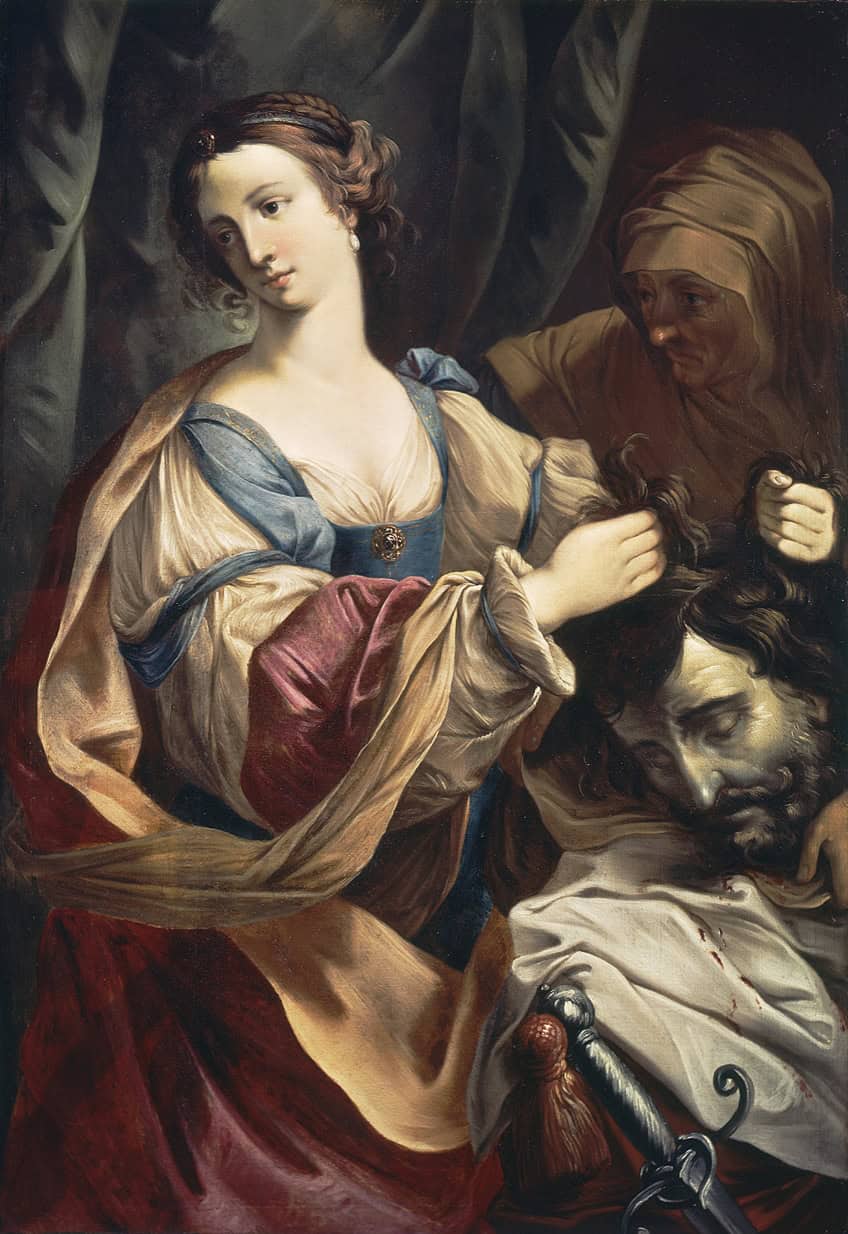
Performance and Contemporary Art
In the world of performance and contemporary art, Valie Export stands out with her provocative piece Action Pants: Genital Panic (1968). Through this performance, Export confronted a Munich cinema audience with her exposed body, using it as a statement against objectification. Pipilotti Rist’s video, Ever Is Over All (1997), offers a cathartic spectacle of a woman smashing car windows with a flower stem, symbolizing defiance against societal restraints.
These works represent a form of liberation and illustrate the power dynamics and societal pressures that influence constructions of female anger and emotion.
Film and Popular Culture
Cinema has long been a medium to showcase female rage, from the Greek tragedy of Medea to contemporary representations. In Euripides’ Medea, the titular character’s betrayal by her husband incites a catastrophic expression of wrath. The film, Promising Young Woman (2020), portrays a modern take on the subject matter by illustrating one woman’s confrontation with trauma and societal injustice, reflecting a shift in perceptions of female anger following movements like #MeToo. Quentin Tarantino’s films often feature women exacting revenge, playing on themes of liberation and violence against women, which resonates with contemporary audiences witnessing a societal awakening to long-standing gender injustices.
Notable Examples of Female Rage in Art
Throughout the history of art, women artists have often channeled their experiences into powerful expressions of rage. Their works have served as bold statements against societal norms and injustices.
Judith Beheading Holofernes (c. 1620) by Artemisia Gentileschi
| Date | c. 1620 |
| Medium | Oil on canvas |
| Dimensions (cm) | 199 x 162 |
| Where Is It Housed? | Uffizi Gallery, Florence, Italy |
Artemisia Gentileschi depicted the biblical story of Judith beheading the Assyrian general Holofernes. Gentileschi’s rendition is particularly notable for its visceral brutality and defiance, mirroring her own personal struggle for justice in a patriarchal society.

Timoclea Killing Her Rapist (1659) by Elisabetta Sirani
| Date | 1659 |
| Medium | Oil on canvas |
| Dimensions (cm) | 163 x 123 |
| Where Is It Housed? | Museo di Capodimonte, Naples, Italy |
Sirani portrays Timoclea, a woman from ancient Thebes, in the act of retribution against her rapist. This artwork serves as a powerful emblem of resistance, capturing the moment where Timoclea pushes her abuser into a well.
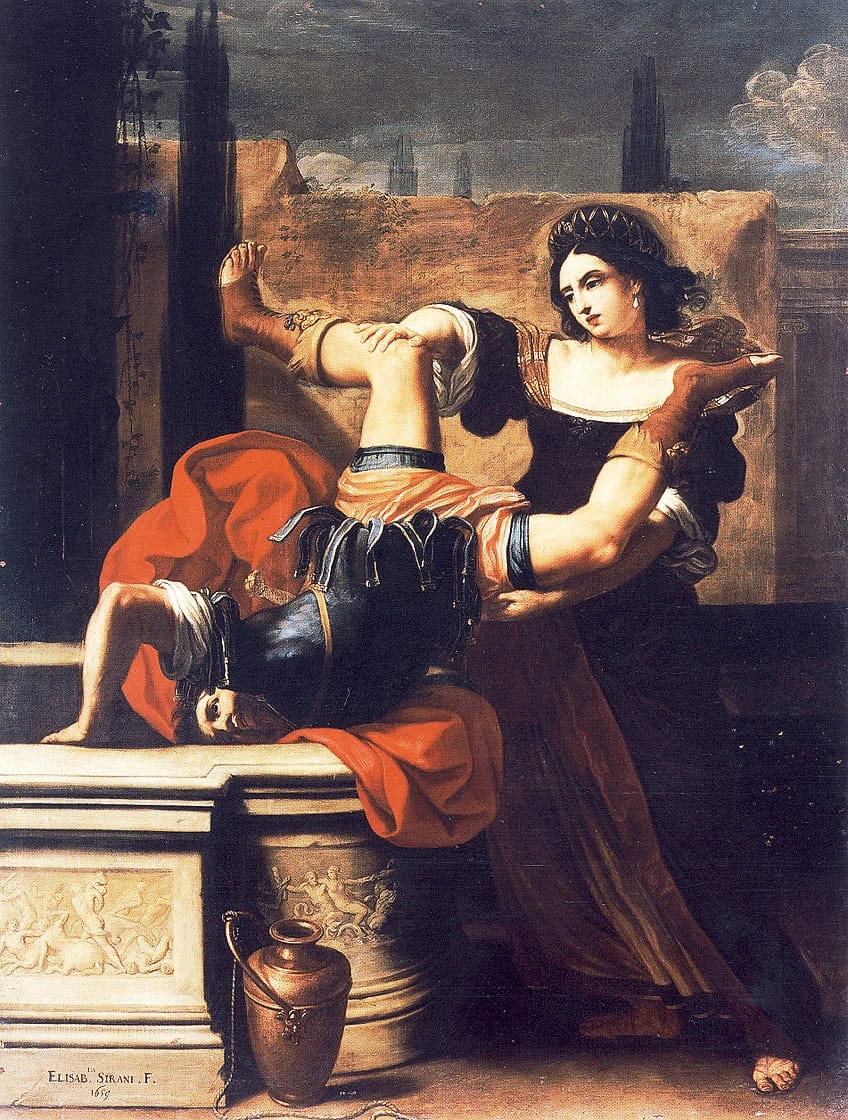
Truth Coming Out of Her Well to Shame Mankind (1896) by Jean-Léon Gérôme
| Date | 1896 |
| Medium | Oil on canvas |
| Dimensions (cm) | 91 x 72 |
| Where Is It Housed? | Musée Anne-de-Beaujeu, Moulins, France |
Although painted by a male artist, Jean-Léon Gérôme’s Truth Coming Out of Her Well to Shame Mankind underscores the concept of feminine truth as a force confronting society. The allegorical figure of Truth appears incensed and determined, highlighting the potential consequences of ignoring women’s voices.
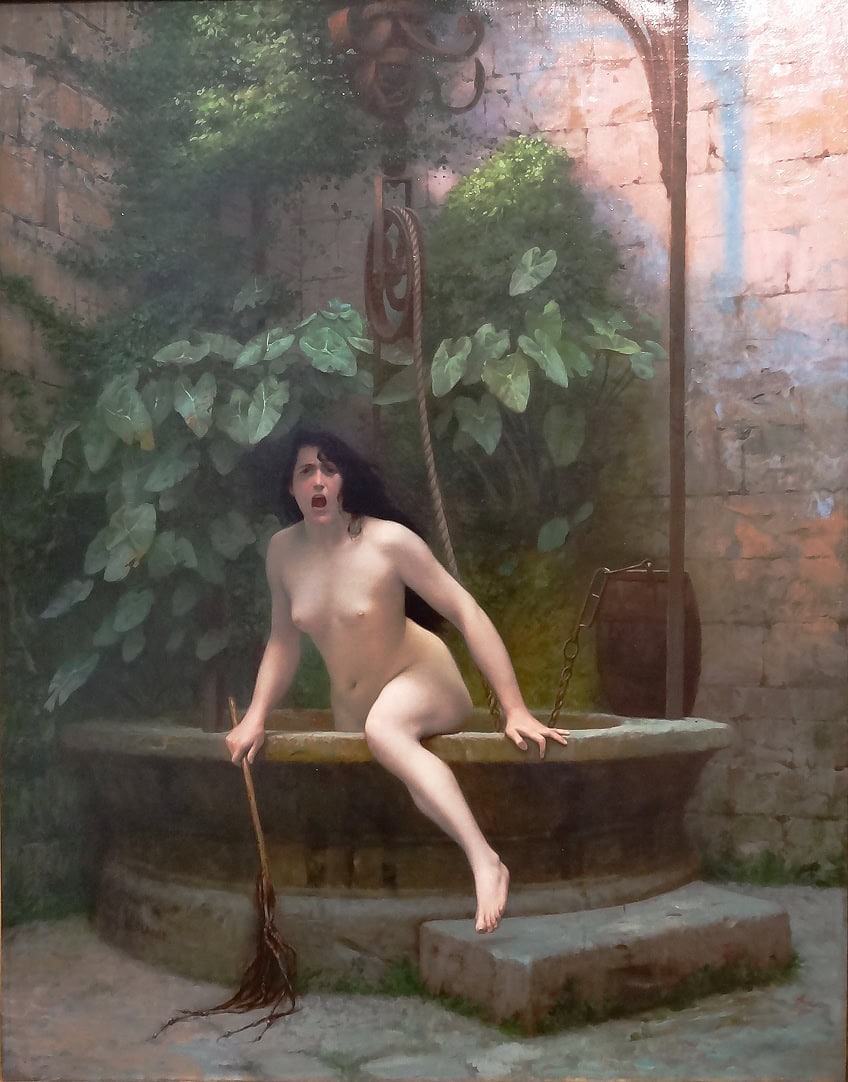
Action Pants: Genital Panic (1969) by Valie Export
| Date | 1969 |
| Medium | Performance art (action in public space) |
| Dimensions (cm) | N/A (Performance art) |
| Where Is It Housed? | Not applicable (Performance art) |
Valie Export challenged societal norms through her performance piece, Action Pants: Genital Panic. By wearing crotchless trousers and walking through a movie theater, she directly confronted the audience with the female body as a form of protest, not an object.
Liberation of Aunt Jemima: Cocktail (1973) by Betye Saar
| Date | 1973 |
| Medium | Mixed media assemblage |
| Dimensions (cm) | 31.8 × 14.6 |
| Where Is It Housed? | Brooklyn Museum, New York City, United States |
In Liberation of Aunt Jemima: Cocktail, Betye Saar reclaims the stereotypical image of ‘Aunt Jemima’. She transforms it into a symbol of defiance and empowerment by arming the figure with a grenade and placing it within a context of revolutionary fervor.
Intersections of Rage, Gender, and Power
Female rage in art is a charged representation of the tumultuous convergence of gender, power, and anger. Historically, male artists have often depicted women as passive or hysterical, neglecting the complicated reality of feminine rage grounded in experiences of injustice and abuse. Jean-Léon Gérôme’s Truth Coming Out of Her Well to Shame Mankind, while painted by a man, unintentionally captures the essence of female anger—a truth that society often tries to suppress. Here, the female form is not just an object of desire but a bearer of truth and liberation.
In contrast, modern expressions of feminine rage harness the raw energy of rage as a response to violence, sexual violence, and rape—acts of aggression that disproportionately affect women.
Valie Export’s Action Pants: Genital Panic is emblematic of this rage, where the female body itself becomes a weapon against the objectification present within the power structures dominated by men. The intersection at play is not just within the art itself but in the acknowledgement and validation of female experiences.

The evolution from the classical to the contemporary reflects a broader societal shift—a reckoning with the longstanding power imbalance and a push towards equality. As artists, activists, and everyday women continue to navigate these themes, art becomes both a mirror and a hammer, reflecting societal attitudes and shaping the discourse on gender and power dynamics.
The Impact and Legacy of Female Rage in Art
Female rage in art has served as a powerful conduit for empowerment and influence, reflecting deep societal concerns and pushing the boundaries of traditional representation. Artists from Artemisia Gentileschi in Baroque art to contemporary figures like Pipilotti Rist have woven the narrative of female fury, leveraging it as a form of socio-political critique and introspection. Gentileschi, notably in works like Judith Beheading Holofernes, drew from historical and literary sources such as Plutarch’s biography of Alexander the Great, to present female subjects as central figures of strength and power. The raw emotion exhibited in her depictions challenged prevailing norms in art, particularly from her vantage point as a woman in the male-dominated art world of 17th-century Italy.
Elisabetta Sirani, another distinguished artist of the Baroque era, expanded on this legacy by portraying women as active, rather than passive, subjects.
The influence of such work made waves beyond the confines of European art circles, reaching as far as Paris and Los Angeles. Modern artistic responses to female rage in art are diverse and impactful. One significant avenue is the exploration of violence against women, where artists use rage as a focal point to raise awareness and advocate for change.
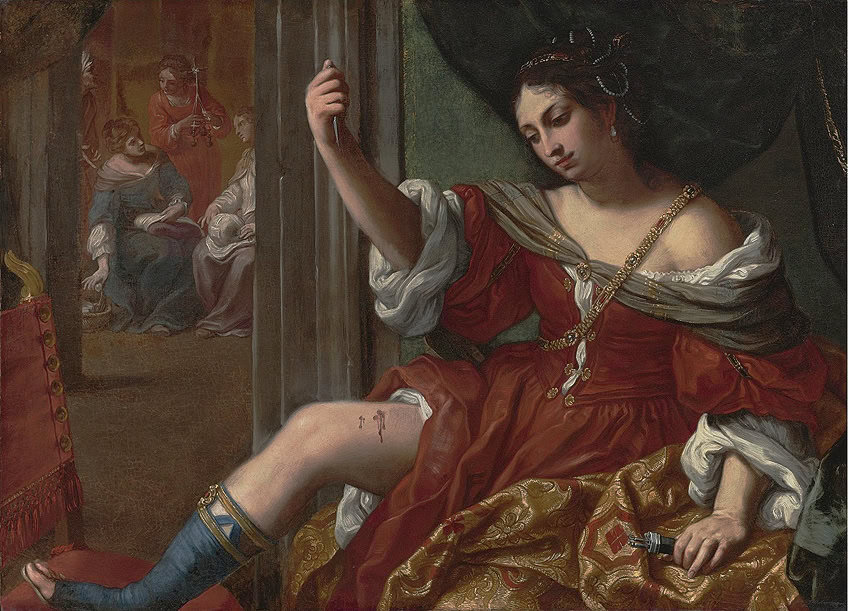
This approach not only highlights the harsh realities faced by many women but also serves as a catalyst for societal reflection and action. Furthermore, female artists harness rage as a tool of empowerment, subverting traditional power dynamics within their work. By challenging and reframing the viewer’s expectations, they assert agency and demand recognition, contributing to a broader discourse on gender, identity, and social justice. The conversation has also permeated the cinematic domain, influencing filmmakers who explore the theme of female rage and its complexities. This ongoing dialogue between past and present forms a continuous legacy, positioning rage as a valid and vital part of the human experience within the world of art.
The depiction of female rage in art is a multifaceted exploration that transcends time and cultural boundaries. From the fierce goddesses of ancient mythology to the modern-day representations of empowerment and defiance, artists have captured the complexities of women’s emotions with striking poignancy. Through their works, they challenge stereotypes, demand recognition, and inspire conversations about gender, power, and agency. As we conclude this exploration, it is clear that female rage in art is not just an expression of anger but a powerful statement of resilience, determination, and the ongoing struggle for equality and justice.
Frequently Asked Questions
How Has Female Rage Been Depicted in Historical Art Movements?
Historical art often represented female rage through powerful and sometimes supernatural figures. Female anger was personified by goddesses or mythical creatures like harpies, witches, Medusa, and the Sphinx, indicating a mix of fear and reverence in older cultural narratives.
What Are Some Notable Examples of Female Rage in Contemporary Art?
Contemporary art has seen artists like Valie Export use shock and confrontation, as in her 1968 performance Action Pants: Genital Panic, where she challenged objectification by wearing crotchless trousers in a cinema. Such works signify a shift towards personal agency and feminist critique.
How Are Societal Perceptions of Female Anger Reflected in Visual Art?
Visual art mirrors societal attitudes towards female anger, historically framing it as dangerous or unstable but increasingly as a legitimate response to gender-based injustices. Contemporary artists use their work to reclaim anger as a form of empowerment and resistance.
How Are Symbols of Feminine Rage Used and Interpreted in Art?
Symbols of feminine rage in art vary from flames and natural disasters to powerful, authoritative poses and expressions. These symbols are used to evoke the intensity of emotion and often serve to question or undermine traditional gender roles and stereotypes.
Isabella studied at the University of Cape Town in South Africa and graduated with a Bachelor of Arts majoring in English Literature & Language and Psychology. Throughout her undergraduate years, she took Art History as an additional subject and absolutely loved it. Building on from her art history knowledge that began in high school, art has always been a particular area of fascination for her. From learning about artworks previously unknown to her, or sharpening her existing understanding of specific works, the ability to continue learning within this interesting sphere excites her greatly.
Her focal points of interest in art history encompass profiling specific artists and art movements, as it is these areas where she is able to really dig deep into the rich narrative of the art world. Additionally, she particularly enjoys exploring the different artistic styles of the 20th century, as well as the important impact that female artists have had on the development of art history.
Learn more about Isabella Meyer and the Art in Context Team.
Cite this Article
Isabella, Meyer, “Female Rage in Art – From Anguish to Empowerment.” Art in Context. April 19, 2024. URL: https://artincontext.org/female-rage-in-art/
Meyer, I. (2024, 19 April). Female Rage in Art – From Anguish to Empowerment. Art in Context. https://artincontext.org/female-rage-in-art/
Meyer, Isabella. “Female Rage in Art – From Anguish to Empowerment.” Art in Context, April 19, 2024. https://artincontext.org/female-rage-in-art/.




